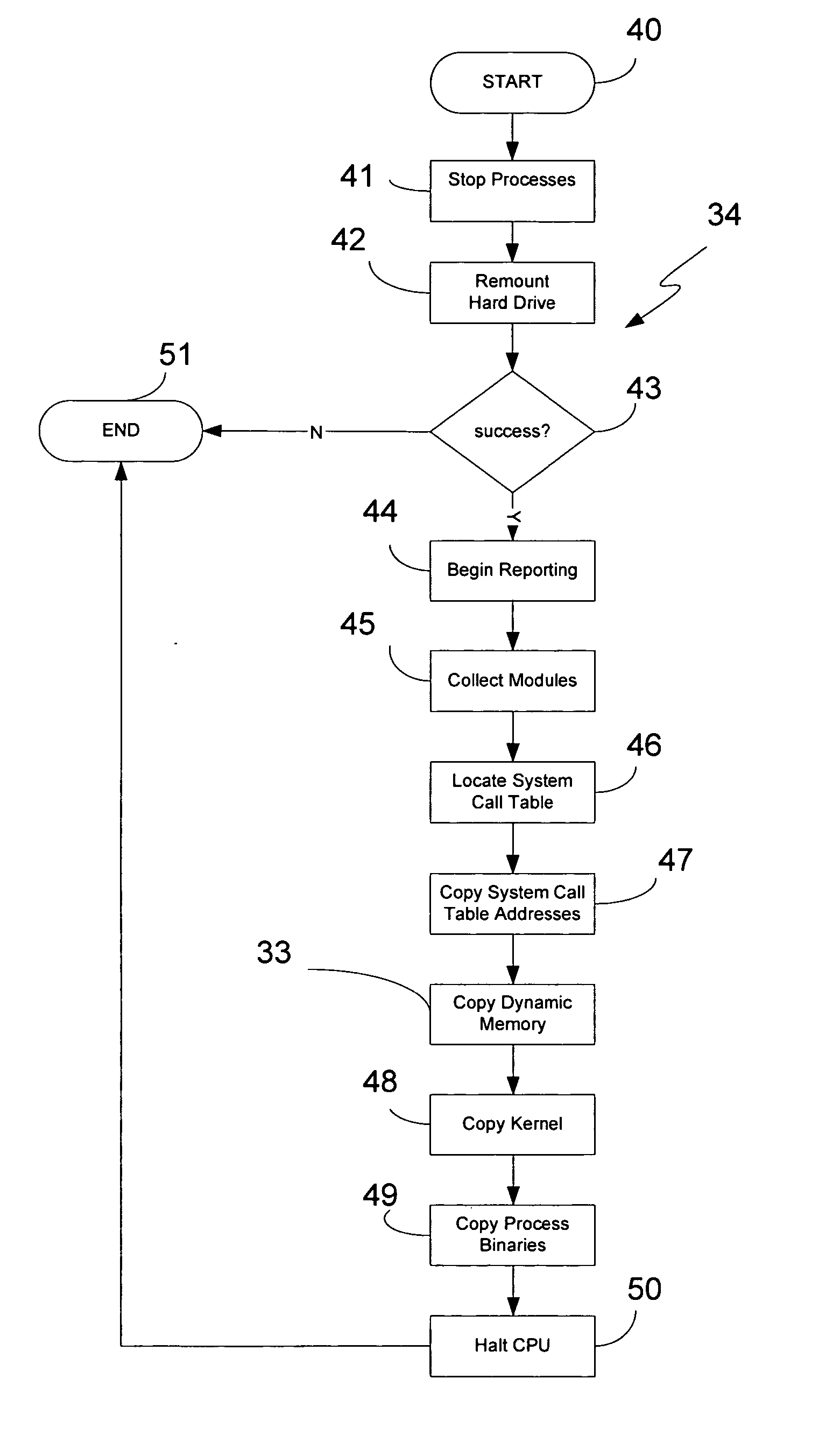Methodology, system, and computer-readable medium for collecting data from a computer
a technology of computer data and data collection, applied in the field of information collection, can solve problems such as the epidemic of malicious activity of hackers, the difficulty of computer security professionals, and the difficulty of solving more difficult and still unsolved problems in computer security, and the detection of exploitation and compromise of the operating system itsel
- Summary
- Abstract
- Description
- Claims
- Application Information
AI Technical Summary
Benefits of technology
Problems solved by technology
Method used
Image
Examples
Embodiment Construction
I. Introduction
[0043] Aspects of this invention provide a software component, sometimes referred to herein as a forensics data collection component or module, which may be used as part of a system, a computer-readable medium, or a computerized methodology. This component was first introduced as part of a suite of components for handling operating system exploitations in our commonly owned, parent application Ser. No. 10 / 789,460 filed on Feb. 26, 2004, and entitled “Methodology, System, Computer Readable Medium, And Product Providing A Security Software Suite For Handling Operating System Exploitations”, which is incorporated by reference in its entirety. As discussed in that parent application, and as illustrated in FIG. 1 here, the forensics data collection component 14 may be part of a product or system 10 whereby it interfaces with other components 12&16. The components 12&16, respectively detect exploitation and restore a computer system to a pre-compromise condition. The exploi...
PUM
 Login to View More
Login to View More Abstract
Description
Claims
Application Information
 Login to View More
Login to View More - R&D
- Intellectual Property
- Life Sciences
- Materials
- Tech Scout
- Unparalleled Data Quality
- Higher Quality Content
- 60% Fewer Hallucinations
Browse by: Latest US Patents, China's latest patents, Technical Efficacy Thesaurus, Application Domain, Technology Topic, Popular Technical Reports.
© 2025 PatSnap. All rights reserved.Legal|Privacy policy|Modern Slavery Act Transparency Statement|Sitemap|About US| Contact US: help@patsnap.com



